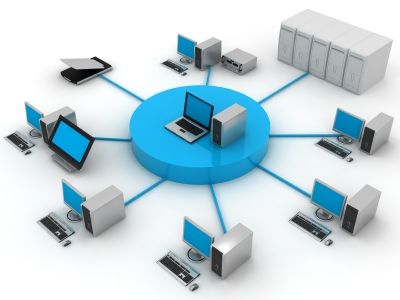There are many types of applications that can consume an inordinate amount of bandwidth. Your corporate network could be suffering from any one, or indeed a combination of them. Slower speeds, more frequent freezes, and other IT headaches can occur when these bandwidth-hungry applications consume more than their fair share. Identify these applications and take steps to negate their acquisition of your precious bandwidth – or suffer the consequences.
What are the consequences? Primarily, your low-bandwidth applications experience a slower response time, your network becomes less efficient, and that costs the company money. Sluggish networks are one common cause of increased IT help desk calls. This in turn causes a loss of productivity where employees are spending time calling the IT department, and IT staff are wasting time troubleshooting these basic issues that could be avoided.
Here are the chief culprits:
1. Video – including conferencing, downloading, and streaming
2. Wi-Fi – when employees piggyback using their personal mobile devices
3. Audio – internet radio or other music, news and information streaming
4. Gadgets – desktop apps such as weather, calendars, clocks, etc.
5. Files – sharing, transferring, downloading, archiving
6. Cloud apps – collectively, these apps can ravish bandwidth
In these days when every dollar counts and corporations are expending great efforts to reduce costs, it seems a foregone conclusion that employee time-wasting would be eliminated as a function of corporate policy.
 Restrict Employee Bandwidth Drain
Restrict Employee Bandwidth Drain
When the time-wasting applications are also bandwidth wasters, then it is even more compelling that the company regains control over its employee base, its IT network, and the losses generated in productivity, time, and money.
Allowing unrestricted Wi-Fi access, video, audio, and other applications outside the scope of daily work activities is a huge drain on resources. It is also an invitation to security issues and degradation in the integrity of the network.
High Definition (HD) video has amplified the amount of bandwidth required to handle everyday applications such as streaming, conferencing, and downloading. Restricting the access of non-work related use will help curb the consumption. Where video is a part of the workload, reducing definition, and scheduling downloads for off-peak hours will help reduce the load placed on the network.
Ensuring that your corporate Wi-Fi network is secure is also paramount to ensuring only the right people are using your precious network resources. Unauthorized individuals, whether guests or low-ranking employees, should not have access to your corporate network, as it represents an unwarranted drain on resources, not to mention a security risk.
Audio, gadgets, and cloud apps not directly related to the job function should also be restricted.
Benefits of LAN Segmentation
High bandwidth file handling that is work-related be split or segmented using bridges, routers and/or switches. This effectively alleviates the bandwidth drain on the network and also reduces overall traffic congestion, makes network problems easier to identify, and enhances security.
Using LAN segmentation helps to isolate problems by reducing the problem of overflow. LAN segmentation can tackle the bandwidth consumption problem for any application or group on the network.
One important role of the IT department is to measure and monitor network utilization. This is essentially the amount of traffic across the network, compared to how much the network can support. There are certain times of business where network utilization will be higher than others. There will also be points in the network which are under greater stress, and diagnosing these early can point to how to avoid infrastructure bottlenecks.
Proper measuring and monitoring, coupled with network segmentation, will also greatly enhance the effectiveness of the IT staff when it becomes necessary to track down a network problem. This increased efficiency translates into less downtime, fewer help desk calls, and a significant reduction in time and money otherwise lost.
High bandwidth applications need not be a problem for any perceptive IT department.



